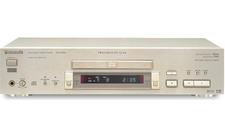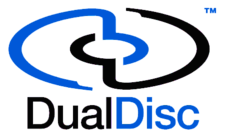It’s the time of year for saving money!
After the successful launch of the DVD-Video format, manufacturers’ attention turned to the next-generation audio optical disc. As before, two different formats were proposed.
DVD-Audio
 The DVD Consortium developed specifications for DVD-Audio, an audio version of the DVD that allowed up to 5.1 channels of 96-KHz/24-bit PCM audio with lossless MLP (Meridian Lossless Packing) compression or two channels of uncompressed PCM up to 192-KHz/24-bit.
The DVD Consortium developed specifications for DVD-Audio, an audio version of the DVD that allowed up to 5.1 channels of 96-KHz/24-bit PCM audio with lossless MLP (Meridian Lossless Packing) compression or two channels of uncompressed PCM up to 192-KHz/24-bit.
Still video frames could be included with these high-resolution streams, but they had to be downloaded in batches of a few still frames into the player when there was no audio present because DVD players had insufficient data read speed to download any video while they played audio. Thus, live concert performances or other continuous music could not be played without interruptions if any graphics were included.
A DVD-Audio disc could also include a Dolby Digital 5.1-channel stream with rudimentary video that could play in a DVD-Video player, providing compatibility with existing DVD players, but a DVD-Audio player was required to decode the high-resolution streams. CD-Audio players cannot read DVD discs, so DVD-Audio discs could not be played in the millions of home, portable, and automotive CD players.
SACD
Philips and Sony had a different proposal.
 As discussed in a previous article [link], Philips had developed bitstream converters for 44.1-KHz/16-bit PCM in CD players that were sonically superior to the other converters of their time. Sony researchers built on these to develop a one-bit 2.8224-MHz audio stream which was called Direct Stream Digital (DSD).
As discussed in a previous article [link], Philips had developed bitstream converters for 44.1-KHz/16-bit PCM in CD players that were sonically superior to the other converters of their time. Sony researchers built on these to develop a one-bit 2.8224-MHz audio stream which was called Direct Stream Digital (DSD).
2.8224 MHz was the sample rate chosen because it is 64 times 44.1 KHz, the sample rate of CD audio, making downconversion of DSD streams to CD-compatible streams computationally straightforward. 96 KHz and 192 KHz are not evenly divisible by 44.1, so transcoding is required to make such PCM tracks usable for CDs. However, the DVD-Audio format also allows for 88.2 KHz and 176.4 KHz streams, which are easy to downconvert to 44.1 KHz streams.
There are several advantages to DSD over PCM. The decoders can be simpler than PCM decoders — actually, a single capacitor can decode the stream into analog audio, although problems result with a one-component decoder, so more sophisticated converters are used.
Because of the relatively high bit rate, a simple gentle-slope anti-aliasing filter is used in the decoders, thus avoiding the audible artifacts inherent in the filters required for 44.1- and 96-KHz PCM.
 DSD critics point to the relatively high noise level of DSD in the audio band compared to PCM. This noise is pushed into the ultrasonic region using noise-shaping techniques. Because this can create problems with very-wide-bandwidth analog audio circuits, additional moderate-slope filtering can be provided in the decoder to reduce this ultrasonic noise.
DSD critics point to the relatively high noise level of DSD in the audio band compared to PCM. This noise is pushed into the ultrasonic region using noise-shaping techniques. Because this can create problems with very-wide-bandwidth analog audio circuits, additional moderate-slope filtering can be provided in the decoder to reduce this ultrasonic noise.
Philips and Sony proposed DSD to the DVD Forum, but it was rejected in favor of PCM. Further, Philips and Sony strongly believed that backward compatibility with existing CD players was important for the adoption of a new high-resolution format, but, again, this concept was rejected. As noted in my previous post [link], the Forum didn’t want to pay the $.10/disc royalty for CDs.
Consequently, the Super Audio CD (SACD) was developed by Philips and Sony. Like the DVD, SACD was a dual-layer format, but instead of one or two high-density layers, the SACD could have a high-density layer and a CD-compatible layer, so the compatible layer of dual-layer SACDs could be played in any standards-compliant DVD or CD player. A few CD players couldn’t read dual-layer SACDs, but those were either very early units (for example, my own first-generation Sony D-50 Discman) or didn’t meet the design requirements for CD playback.
The maximum data rate of an SACD is the same as that of a DVD. Up to six full-bandwidth streams can be included using Philips-developed DST (Direct Stream Transfer) lossless compression.
Although most surround SACDs used 5.1 channels, Tom Jung made a few recordings that used the sixth channel for height information. When those were played using an overhead loudspeaker, the dimensionality was greatly enhanced, but such playbacks were rare. David Chesky assigned the six channels into a different configuration, but Philips officially frowned on that, so it didn’t last.
 Space was allotted on the high-density layer of an SACD for video material, but Philips and Sony had doubts about the practicality of video for anything beyond lyrics. Preparing and authoring more substantive video content requires both time and copyright clearances for all included images, which costs money and additional time. In the end, no specification for SACD video content was developed.
Space was allotted on the high-density layer of an SACD for video material, but Philips and Sony had doubts about the practicality of video for anything beyond lyrics. Preparing and authoring more substantive video content requires both time and copyright clearances for all included images, which costs money and additional time. In the end, no specification for SACD video content was developed.
One additional point of interest: the first Sony SACD releases were single-layer two-channel discs that didn’t include surround streams, and their first players were two-channel only. Sony’s marketing group was primarily influenced by the Japan audiophile market, which was not interested in surround audio. Philips strongly believed that surround sound and backward compatibility were required for the adoption of SACD.
The scuttlebutt I heard was that the President of Philips told the President of Sony that if Sony didn’t provide multichannel players and hybrid SACD/CD discs, Philips would terminate the SACD partnership. Sony subsequently released both multichannel players and program material on hybrid discs.
For further comments on SACD vs. DVD-Audio, see my previous post.
The next installment: the HD-DVD vs. Blu-ray battle.
Garry Margolis is an independent consultant based in Los Angeles. He produced and engineered analog recordings and supervised their mastering and pressing, then joined JBL Professional and UREI, where he was involved in the specification and voicing of studio monitors and high-end consumer systems.
He was Philips‘ North American liaison to the motion picture and recording industries for technologies including MPEG Multichannel audio, Super Audio CD, and Blu-ray.
He is a Past President of the Audio Engineering Society and currently serves as its Treasurer.








